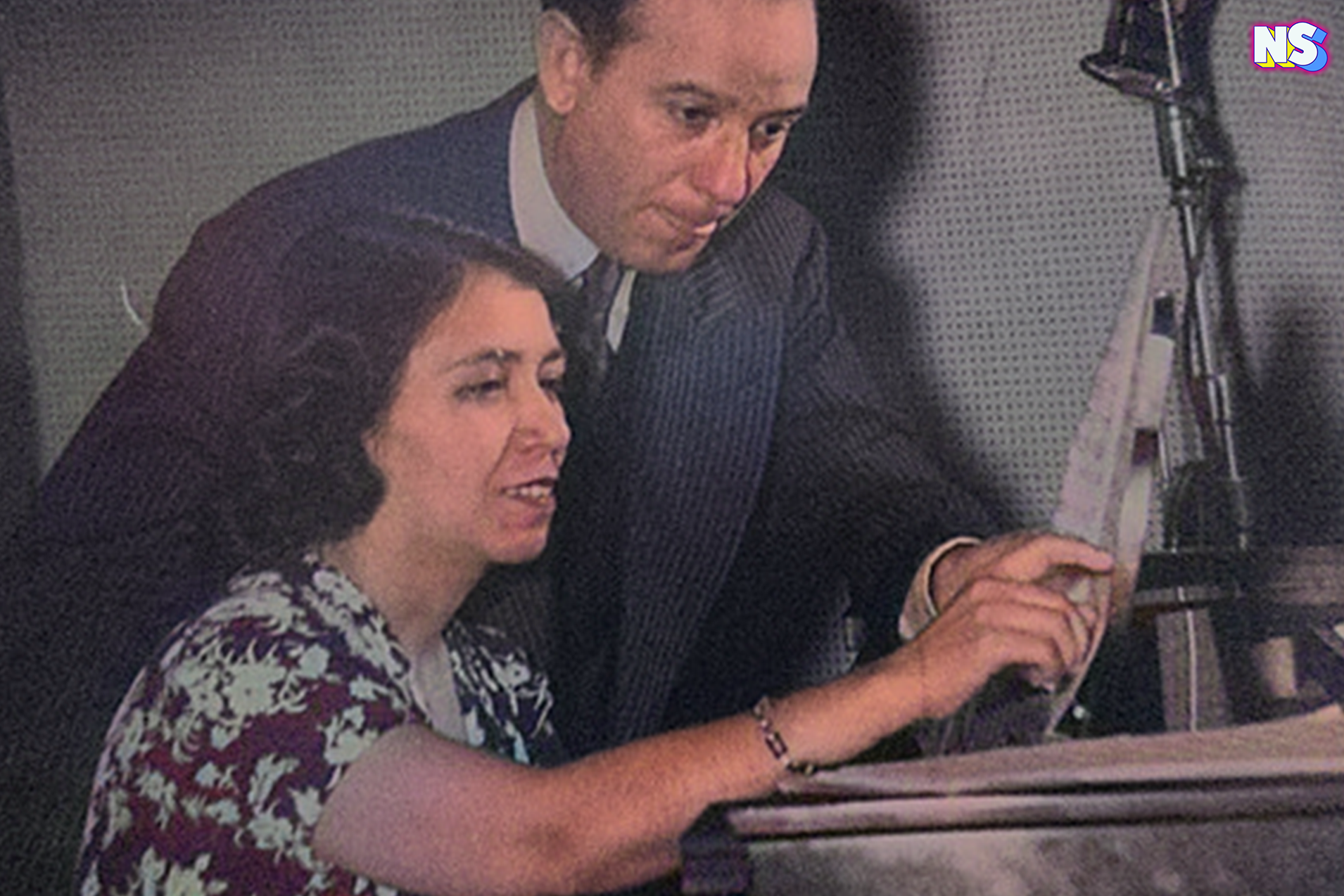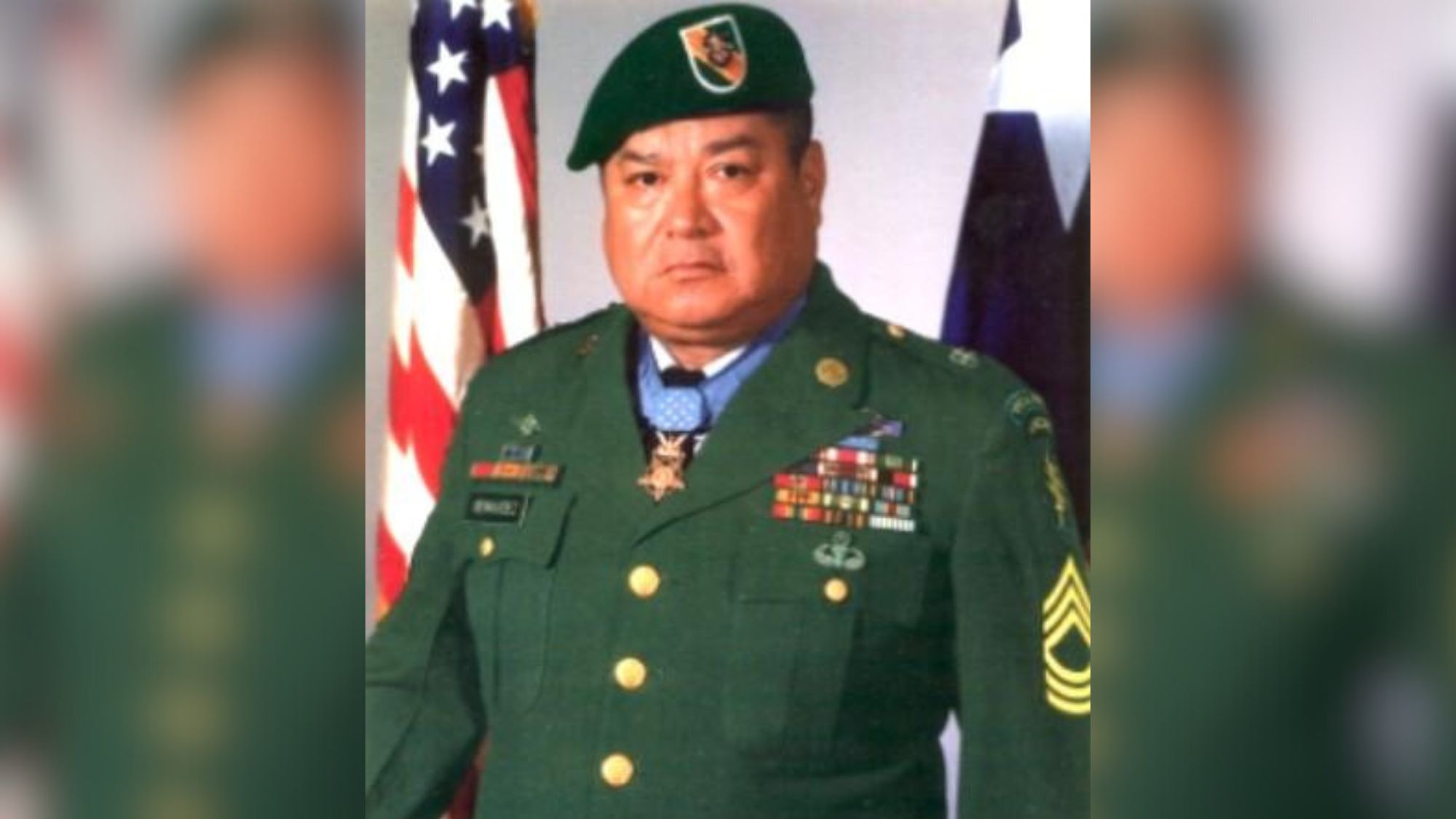Illustration By Nuestro Stories
Saying Clotilde Arias had “a way with words” is an understatement.
One of the most interesting Latinas to make United States history, Arias was a Peruvian-American composer, translator, and activist best known for creating the official Spanish version of the U.S. national anthem, “The Star-Spangled Banner.”
“Clotilde Arias’s story reminds us of the resilience and creativity of many Latina immigrants,” the Smithsonian’s National Museum of American History says. “She succeeded in a male-dominated world in New York in the ’40s and ’50s. Her best-known act of patriotism was creating a singable Spanish-language version of the Star-Spangled Banner.”
Yet, the Latina’s national accomplishment is a historic feat almost lost to history.
Creating the Spanish National Anthem
The Spanish-language translation of the national anthem was commissioned in 1945 by the Division of Cultural Cooperation of the U.S. Department of State and the Music Educators National Conference.
According to NPR, the translation was written at the end of World War II, “as President Franklin Roosevelt was trying to win allies through cultural exchange.”
“Roosevelt sent artists like Walt Disney and Orson Welles to Latin America, and commissioned translations of patriotic songs to send abroad “to spread U.S. patriotism to Spanish-speaking countries,” NPR explains.
It was all part of the Good Neighbor Policy, to improve relations with the nations of Central and South America.
Arias — who was born in Iquitos, Peru in 1901, and later moved to the United States — was no stranger to translating popular songs at the time. Her Spanish-language translation of the Andrew Sisters “Rum and Coca Cola” was also a hit.
She became a naturalized U.S. citizen in 1942, about 20 years after moving to the U.S. to study music. In addition to her work on the translation of the national anthem, Arias was a composer and wrote various musical works.
Her efforts in bridging cultural understanding through music were reflected not only in her translation work but also in her broader contributions to the promotion of Pan-Americanism — a movement that sought to foster cooperation and understanding among the countries of the Americas.
Not the First Spanish Translation
In 1814 Francis Scott Key wrote “The Star-Spangled Banner” during the War of 1812, while watching the Baltimore battle of Fort McHenry. Fearing that the United States had lost the battle to the British, Key recalled that the sight of the American flag waving over the fort at “dawn’s early light” inspired him to compose the words that became the official U.S. national anthem.
By 1861, “The Star-Spangled Banner” had been translated into several languages. Further translations were used as a way to assimilate immigrants during the second half of the 19th century and into the beginning of the 20th.
There were two Spanish versions by this time, but neither was singable. “The Star-Spangled Banner” became the official U.S. national anthem in 1931.
In 1945, the Division of Cultural Cooperation of the Department of State, in conjunction with the Music Educators National Conference, called for submissions for the translation of the song into Spanish and Portuguese, so it could be distributed throughout Latin America. What better way for the United States to share its values and patriotism with its neighbors to the south—something highly desired at the time—than through its national anthem?
Arias, who worked on Madison Avenue writing advertising jingles, took on the task, translating the lyrics so they could be sung, as required in the contract she received from the U.S. government. She sent in her work; it was accepted as the most accurate and the closest to the English words. Her version still stands as the only official translation of the national anthem allowed to be sung.
Falling Through the Cracks
Historians agree that Arias’s translation remarkably preserves the original, a challenging feat given the inherent differences between Spanish and English. Her rendition is a piece of art, many say, reflecting a manifest patriotism of a Pan-Americanist who passionately embraced the sentiments expressed in the lyrics.
In 1946, the government paid Arias $150 for her translation, worth about $2,100 in January 2020, according to a 2020 story in Time magazine. To date, her version is “the only official translation of the national anthem allowed to be sung,” according to the Smithsonian.
However, Arias’ rendition of the “Star-Spangled Banner” failed to gain widespread recognition, according to many reports. In fact, in a 2012 review of Arias’ work, the Smithsonian was unable to locate a recording of her translation. Consequently, the institution enlisted the services of a local choir, Coral Cantigas, to perform the rendition.
“The fact that the song was at risk of falling through the cracks is representative of the Hispanic community’s struggle to see its concerns prioritized in American society,” says Claudia Romo Edelman, Founder and CEO of the We Are All Human Foundation.
“That’s a symbol of how there’s never been full recognition of Hispanics in America,” Romo Edelman said, adding that she hoped Rijos’ performance of Arias’ Star Spangled Banner “raises awareness of the contributions of Hispanics so they’re better seen, heard and valued.”
As for Arias, her work on the Spanish translation of the national anthem remains a testament to her commitment to fostering cross-cultural connections and understanding.





